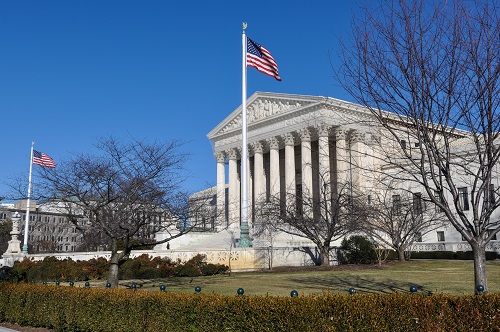Fed raises rates by 0.75 points for second month in a row
The Federal Reserve raised its benchmark policy rate by 0.75 percentage points for the second month in a row on Wednesday as it doubled down on its aggressive approach to taming soaring inflation despite early signs the US economy is starting to lose steam.
At the end of its two-day policy meeting, the Federal Open Market Committee lifted the target range of the federal funds rate to 2.25 per cent to 2.50 per cent.
The decision, which had unanimous support, extended a string of interest rate increases that began in March and have ratcheted up in size as the Fed’s battle to fight inflation intensifies.
The rate rise means the central bank is in the throes of the most aggressive cycle of monetary tightening since 1981. It follows a half-point rise in May, and a 0.75 percentage-point rise last month — the first of that magnitude since 1994.
With inflation running at its fastest pace in more than four decades, further rate rises are expected well into the second half of 2022, but the pace of those increases is hotly debated.
Economists are split over whether the Fed will implement another 0.75 percentage point rate increase at its next meeting in September or opt for a smaller half-point rise.
In a press conference following the decision, Jay Powell, Fed chair, said that as the central bank continues to tighten policy “it likely will become appropriate to slow the pace of increases” while policymakers assess how rate rises are affecting the economy and inflation.
Those remarks prompted a market rally, with the blue-chip S&P 500 index rising by 2.6 per cent and the tech-heavy Nasdaq gaining 4.1 per cent. The two-year Treasury yield, which moves with interest rate expectations, was 0.08 percentage points lower at 2.97 per cent.
Ashish Shah, a chief investment officer at Goldman Sachs Asset Management, said: “We’re past peak hawkishness . . . their speed going forward will be slower.”
However, Powell said the Fed would shift to a “meeting-by-meeting” approach to setting policy and that “another unusually large increase could be appropriate” at the September meeting. He added that the committee “wouldn’t hesitate” to implement an ever-sharper rise if warranted by economic data.
James Knightley, chief international economist at ING, said: “Inflation remains the Fed’s number one priority and they’re willing to sacrifice growth to achieve it.”
The Fed chair warned a period of slower growth and a weaker jobs market might be needed to bring down high inflation, but he rejected the suggestion that the US is already in a recession.
“The US is not currently in a recession, and the reason is that there are just too many areas of the economy that are performing too well,” he said, although he added that avoiding one has become more challenging.
The central bank altered its assessment of the economy, noting that “recent indicators of spending and production have softened”, a more downbeat outlook than last month when it said “economic activity appear[ed] to have picked up”.
Powell reiterated allowing inflation to become “entrenched” would be a worse outcome than moving too aggressively, adding: “Price stability is what makes the whole economy work.”
The federal funds rate is projected to reach about 3.5 per cent this year, a level that will more actively constrain economic activity.
Central bank policymakers want to see a string of decelerating monthly inflation readings but economists warn that might not happen for months, at least for “core” readings stripping out volatile items such as food and energy.
In June, core goods and services recorded an alarming 0.7 per cent jump, led by a sharp uptick in rent and other housing-related costs and other expenses that are likely to remain elevated into the autumn.
The Fed raised rates just one day before the release of gross domestic product figures, which could show a second straight quarter of contracting economic growth. That would meet one of the common criteria for a technical recession, but Powell on Wednesday pointed to other signs of economic strength — including the robust labour market — to challenge the notion.








